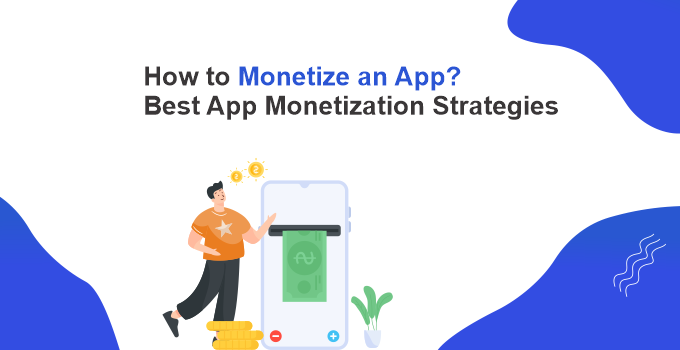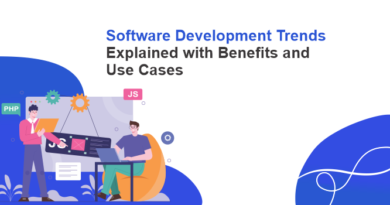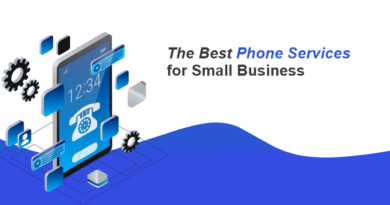How to Monetize an App? Best App Monetization Strategies
- What App Monetization Exactly Is?
- Importance of App Monetization
- Different Strategies of App Monetization
- 1.In-app Advertising
- 2.Subscriptions
- 3.In-app purchases
- 4.Sponsorships & Partnerships
- 5.Paid Apps
- 6.Freemium Model
- 7.Charge on Ad-Free App
- 8.White Labeling
- 9.Lead Generation and Affiliates Marketing
- 10.Email Marketing for App Monetization
- Choosing App Monetization Strategies
- Tools for App Monetization Strategies
- Final Thoughts
It is one of the most common questions for app developers when they start their mobile app development journey- how to monetize an app? The initial plan is to monetize an app heavily from the get-go and as such, it keeps developers on their toes during development. So, this guide is designed to give you a detailed overview of how to implement the most popular app monetization strategies. You’ll learn how app monetization works, including the various ways that apps can generate revenue.
What App Monetization Exactly Is?
Monetize your app is the process of generating revenue from users who install your application and use it regularly. Monetization often refers to the income generated from an application or service, rather than its cost to develop. It is typically achieved through advertising and in some cases affiliate marketing.
There are tons of ways to monetize your app, and if you explore each one, you will find what works best for you. These strategies work better for some kinds of apps than others. Some apps only rely on app monetization in one way, and others use multiple means to monetize.
If you’ve generated revenues from your app, you’ll need to keep track of them. If you’re interested in securing funding, it can be extremely beneficial to read this post.
Click here to read: How to Increase Shopify Sales with a Mobile App
Importance of App Monetization
A revenue stream is crucial because people have more choices about installing free apps than paying for them. That’s why successful app developers have found a new business model that works.
When you create an app, it will most likely have to generate revenue after download. You have to have a strategy for generating revenue from it. By creating a strategy, you can ensure the following things happen:
- Continuous crafting revenue from your app
- Maintain user experience relatively integral
Different Strategies of App Monetization
App monetization strategies have to be customized to the app. Some apps will be more suited to specific platforms and other apps may require different monetization strategies. Some developers focus on good performance and ease of use, others do so by providing you with a lot of customization options. The more familiar you are with the various ways you can make money from your app, the easier it will be to pick out those that are best suited to your app. Let’s know aout each strategy in detail.
Click here to read: 15 Key Features for a Successful Mobile Commerce App
1.In-app Advertising
More people you have using your app, the more information you’ll have about them and hence the more targeted your advertising will be. Mobile apps allow businesses to interact with customers in new ways, and that should be leveraged. The most common ways of in-app monetizing are:
- Banner ads
- Affiliate ads
- Reward ads
- Native ads
- Interstitial ads
You have to tailor your ad placements to the type of app you’re making. You also need different ad strategies for different platforms. Don’t assume that the “one-size fits all” approach will work for everyone.
In-app advertising is a method of promoting your app that is highly targeted and affordable. You should place ads in such a way that it doesn’t distract users or interfere with the app interface.
2.Subscriptions
Subscriptions are a great way to increase your revenue by letting your users makes small, affordable payments regularly. Apart from that, it is also another way to convince users that they are purchasing an app that is worth their money.
This model is best for established businesses that already have a large user base and are looking to increase their engagement. Not only will subscriptions generate income, but they’ll also provide a steady stream of active users over time.
The statistic indicates that Android users are less likely to spend on subscriptions than iOS users. However, with lump sum app monetization strategies, it’s hard to tell how much content to provide with subscription app monetization because there are a lot of factors to weigh in. If you’re trying to promote an app that requires continual use, such as news, music, or media apps, this model is ideal.
3.In-app purchases
In-app purchases are commonly used to monetize games, and a survey says they’re the most frequently used pricing model. Apps make money through in-app purchases, which are optional purchases that do not affect the novelty and functionality of the app.
In-app purchases can be a great way to increase engagement, as long as the purchase adds to the user experience and doesn’t disrupt it.
The ability to trial an app before purchase is not just good for acquiring a broad audience, it’s also good for customer satisfaction. Keep in mind that, whenever you earn a sale, Apple and Google Play take their commission. Apple and Google Play charge a 30% per sale commission.
4.Sponsorships & Partnerships
When designing an app, it’s worth considering opportunities to partner with or even be acquired by another company. If you’re trying to get your app into the hands of more people, partnering with a brand that has an established user base may be a great place to start.
Sponsorships can help you build a stronger relationship with your relevant audience by connecting them to others. Besides capital, sponsorships also bring brands access to capabilities and market insights of their partners.
A splash screen is one way to introduce your app and sell its partnership. The screen usually fills the user’s screen with an ad that is relevant to the app’s offering. People are more likely to reach out to a sponsor if they can find that person easily and affordably. If you want to promote your partnerships with apps, some options include in-app ads, social media campaigns, or offering custom in-app content. All of these strategies have a high chance of being useful.
5.Paid Apps
Paid apps charge on download, which makes their revenue model rather disadvantageous. The more free apps there are in the market, the harder it will be for your paid app to get traction.
This means that the number of free apps will be increasing every year, while the number of paid apps will be decreasing every year. Though paid apps have a higher user acquisition cost than free apps, they do offer other benefits such as higher engagement. Investment in-app installs will pay off for apps that generate meaningful revenue, like a platform like Facebook or messaging app.
6.Freemium Model
Freemium models are based on the premise that users will try your app for free, but some users might not use it again until they’ve purchased the upgrade. If you’re marketing a free app, your users will grow more quickly. So try using this model to gain more users faster. The app can be free to download, and you can earn money either through in-app advertising or via paid upgrades for premium users.
While it’s true that freemium models can take some time to become profitable, and certainly you need patience and dedication, this same time can be shortened dramatically if you spend wisely.
7.Charge on Ad-Free App
Commercially speaking, companies often choose to launch an ad-free version of their app to compete with the free versions which show ads. Maybe you can make your app run better by removing the advertisements and letting people pay for an upgrade.
8.White Labeling
The white-label app service reuses Company A’s application source code to deliver businesses a customized version of their software. Many third-party resellers purchase and rebrand a software product and then resell it to their customers. A good example is when BiznessApps offers a white-label app solution for each of their business clients.
9.Lead Generation and Affiliates Marketing
The affiliate marketing program is a great way to get additional revenue for each sale you generate, and partners can derive earnings based on the performance of other companies.
For example, if you advertise Amazon products through the Amazon Associates program, you receive a commission on everything that person buys by following your link. Lead generation is about finding contacts who can present you with potential customers and such contacts are mostly found in Facebook, LinkedIn, and Instagram.
10.Email Marketing for App Monetization
Radicati Group says that the world sends 196 billion emails daily, with 109 billion, or 60% being business emails. So, email is a major part of business communications. In all other words, emails make up a versatile and cost-efficient way of communicating with your customers.
Email marketing is a good option if you want to make money off your app and have a sustainable business. Email and SMS Marketing are the two most popular ways to monetize apps by sending marketing content about other companies to your subscribers. The brands will pay you for sending them newsletters.
Choosing App Monetization Strategies
When deciding which way to make money from your app, you need to consider who you’re making it for, what they want, and what you’re able to do. It’s important to consider a range of strategies for monetizing your app, especially if you have limited resources.
When designing your app, you should think about how people will use it, how you’ll market it, and how you’ll want to improve it in the future. If you’re a good marketer, in-app advertising might be the way to go. If you’re a public relations expert, strategic partnerships and sponsorships might be the way to go. Do in-depth research about your competitors. Find out how they treat their iOS and Android apps.
With those factors in mind, you should be able to identify an app monetization strategy that will meet your business’s needs.
Click here to read: The Complete Guide to App Store Optimization (ASO)
Tools for App Monetization Strategies
Once you’ve come up with a plan, it can be easier to execute on it if you also use digital tools to your advantage. Here are a few of the most popular tools to help you figure out how to make money with your app:
- Smartlook: You can use Smartlook to track how people use your mobile apps and make changes based on what you learn.
- RevenueCat: RevenueCat is a subscription platform for mobile app developers. The goal of most companies is to make more money from their customers.
- Braze: Braze’s functionalities can help you create interactive, personalized user experiences that may contribute to your customers’ growing loyalty.
- Appy Pie: Appy Pie is a tool that allows you to create an app for a fraction of the cost. An app created from Appy Pie is instantly ready for shopping and social integrations.
Final Thoughts
Now, you should understand how to monetize your app. Remember, if you want a successful app, your marketing and sales strategies need to complement each other. If you want your business to grow, it’s important to look beyond conversion numbers and consider other aspects of your business that could be improved. You must use inbound app marketing strategies to keep improving those numbers.
Your focus should be on improving your app’s usability and on gaining customers that are a good fit for your business.



